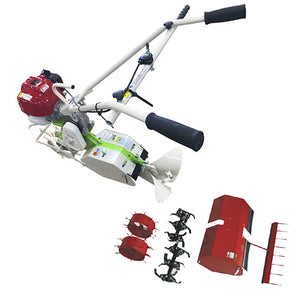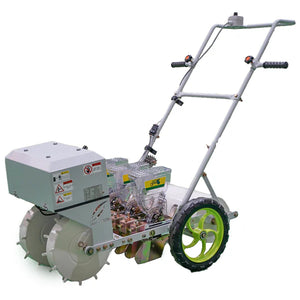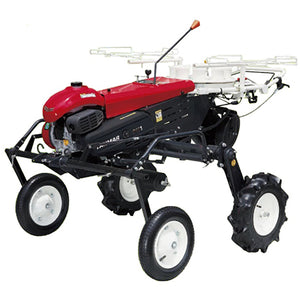Microgreen farming is getting popular around the world today.
This is the page for you who are interested in starting microgreen farming and planting farming.
We, Japan Agri Trading are exporters of Japanese farm machines and supplies to all over the world.
In this page, we are going to show you our recommend trays and seeding kit that are best for growing microgreen at home.
What is microgreen?

Microgreens are young vegetables grown 1 to 3 weeks after sprouting. They are very small and fine vegetables smaller than 5 cm. Microgreens are not specific nage but general name.
“Microgreens” is a marketing term used to describe tiny, tender, edible greens that germinate in soil or a soil substitute from the seeds of vegetables and herbs. Smaller than “baby greens,” and harvested later than “sprouts,” microgreens can provide a variety of leaf flavors, such as sweet and spicy. -- USDA
Baby-leaf and sprouts are often mistaken as microgreens. Baby-leaf are vegetables grown older than 1 month after sprouting. Sprouts are the small vegetables grown in the water. On the other hand, microgreens are grown in the soil.
Broccoli, kale, basil, coriander, mustard, amaranth, rocket salad, red cabbage are popular microgreens.
Microgreens are used in the restaurant around the world recently. The taste and nutrition of microgreens are getting attention by gourmets and chefs around the world.
Nutritions of microgreens
In 2014, USDA (United States Department of Agriculture) reported that microgreens contained higher nutritive value. The report initiated microgreen boom. The boom started from the US and gradually developed to the world.
Microgreens contain more nutrition than general vegetable than vitamin C, vitamin K, vitamin E, lutein, carotenoid, in general.
How to grow microgreens at home
Microgreens are short life crops. Normally, microgreens are fresh for 7 days after picking. This is crucial for common market logistics. Supermarkets and vegetable retailers are not able to handle the short life microgreens.
The answer is rather simple. Grow microgreens yourself at home!
There are many benefits of growing microgreens at home.
- It is easy and quick to grow microgreens.
- You don't need to own "farm". Just need space to store trays at home.
- You can get microgreens at very low price. Microgreens are very expensive in the market!
- You can start farming at home with very small investment.
- Enjoy microgreens anytime you want.
- Share microgreens with neighbors and friends. You can sell microgreens if you wish.
Microgreens are able to grow in the garden. However, we recommend to grow under the roof because strong wind or rain will fall crops easily.
Microgreens sprout at 20 to 25 degree Celsius. After sprouting, ideally temperature should be 15 to 20 degree Celsius.
Trays and Seeders
Let's talk about tools and supplies for growing microgreens.
We recommend to use nursery trays and seeding tools designed for Paper Pot System.
Solid bottom trays

Paper Pot Seeding Tools
Paper Pot is a manual transplanting method. Paper Chain Pot and Transplanter will plant seedlings in the farm field just pulling the transplanter backward. Please check Paperpot page for more information.
For microgreens, we will use Nursery Trays and Seeding Kit.
After spreading the soil over a nursery tray, use a dibbler to make small dips to sow seeds. Then, drop seeds by using a Drop Seeder. Lastly, cover the soil with hand or a brush.
The tray is simple but well designed. The nursery trays have been used for planting paddy rice originally. The nursery flats have many small holes at the bottom. Those holes will hydrate the water and take air efficiently.
If you are thinking to try small farms in the future, we recommend to have one Paperpot System Complete Starter Package. You can use nursery trays and seeding kit for microgreens. Then use a transplanter and paper chain pots later for small farm.





